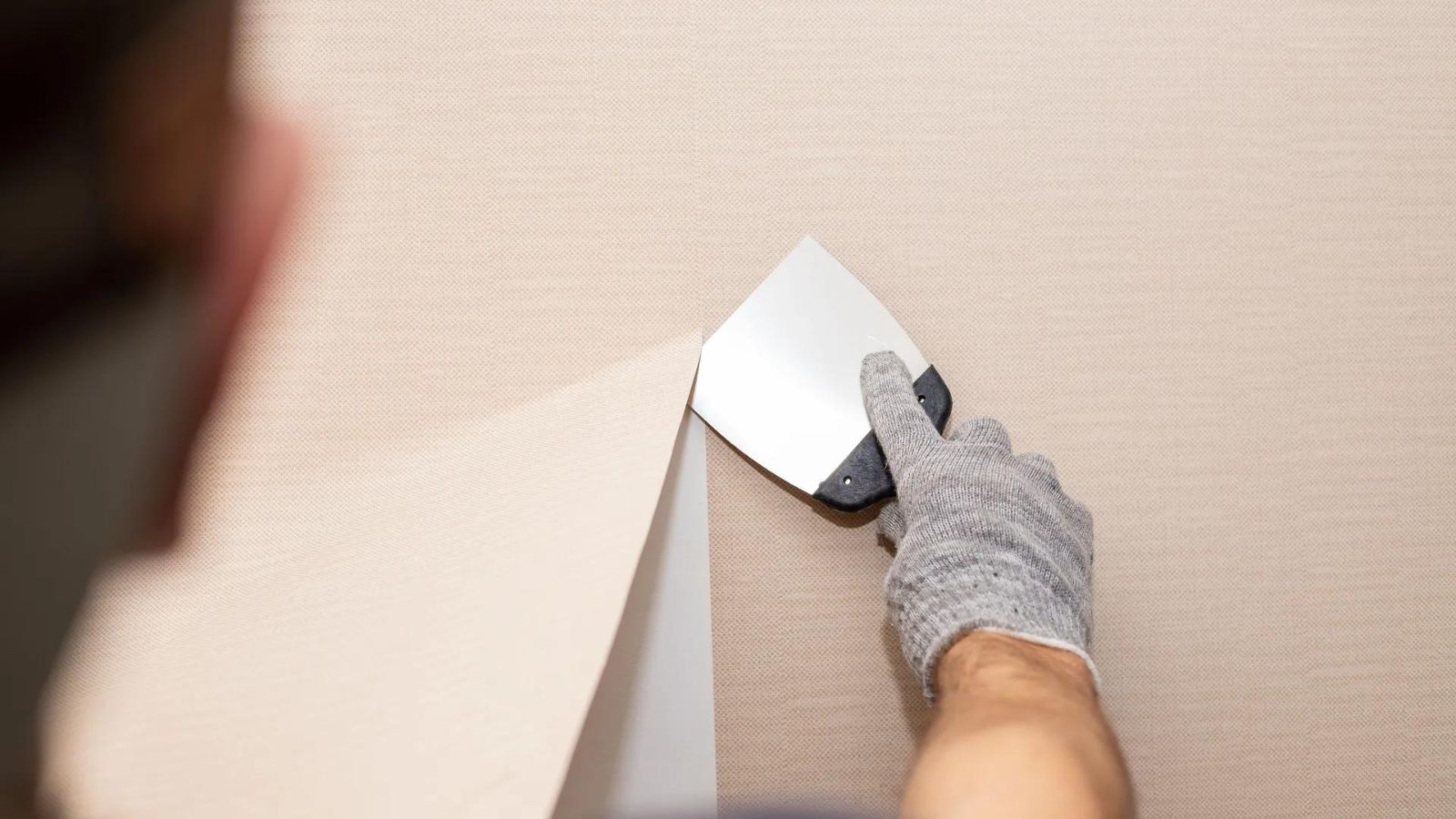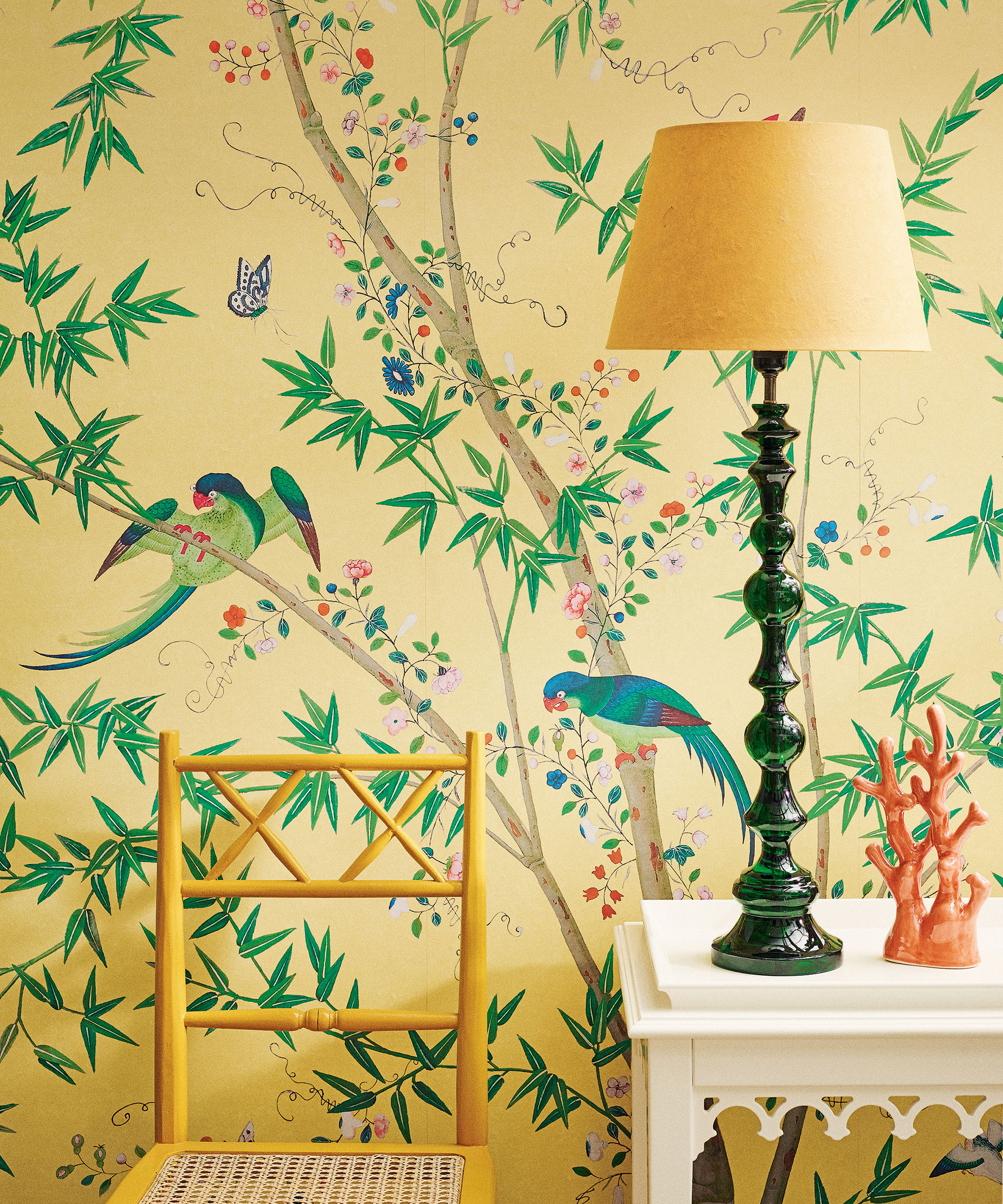How to remove wallpaper – easy wallpaper stripping tips
This step-by-step guide to wallpaper stripping makes the process quicker and so much simpler


Gabriella Dyson
Knowing how to remove wallpaper the right way can make a messy job an easier – and speedier – task.
Wallpaper stripping is certainly a DIY chore you can take on yourself, whether the existing wallpaper is looking a little tired, you've simply fallen out of love with it, you have new wallpaper ideas that require a fresh surface, or you don't want to paint over wallpaper but prefer a freshly plastered surface. There's something rather cathartic about tearing strips of wallpaper off a wall, too.
Feel like tackling the worn-out wallpaper yourself? Alex Whitecroft, Head of Design over at I Want Wallpaper, is on hand to guide you step-by-step through the process of removing wallpaper.
How to remove wallpaper
The top tips below will ensure you have the perfect blank canvas for your elevated room refresh, and help you take the first step to learning how to wallpaper, too. Before you start, you need to make sure you've got the right tools. Bear in mind that if you want to apply peel and stick wallpaper afterwards, or are removing peel and stick, you will need to consult the manufacturer's instructions. Similarly if you want to remove a wallpaper border, but preserve the wallpaper beneath, your approach will be a little different.
What tools do you need to remove wallpaper?
To remove wallpaper you will need:
- Old sheets/dust cloths
- Wallpaper scraper (we like this 4-piece scraper set from Walmart)
- A ladder
- Utility knife or orbital scorer
- Spray bottle (try these
- Liquid soap/detergent
- Sponge
- Tape
- Rubber gloves
- Steamer (for stubborn wallpaper)
A step-by-step guide to removing wallpaper

1. Get prepared to remove wallpaper
The absolute first thing you want to do is to prepare your space, says Alex. 'As with all DIY jobs, it’s important to cover your floors, woodwork and furniture,' he advises. 'Additionally, removing wallpaper is a messy job, and there’s nothing worse than finding bits and pieces lying around days after you’ve finished. As a result, make sure you spend some time making sure your work area is well covered – a little caution is always worth the investment. If it’s not possible to remove furniture from the room, move it to the center of the room, then cover it with an old sheet.
'Next, consider removing any wall electrical sockets. It can help with measuring paper in those areas, and ensure there aren’t any gaps. Make sure sockets are sealed and covered to prevent water from getting in and, for added safety, turn the electricity off too.'
Design expertise in your inbox – from inspiring decorating ideas and beautiful celebrity homes to practical gardening advice and shopping round-ups.
2. Check for layers
To save time, new wallpaper is often papered over old. While it might be easier to add, it can make your job harder when it comes to wallpaper stripping. So, before you start to remove wallpaper, it's always good to get an idea of how many layers there are.
Alex's top tips?
'Strippable paper is designed to be easy to peel off, while many vinyl wallpapers are also easy to remove. You can check whether it will be a simple task or not by using a knife. Use it to pry the corner of the paper away, before using both hands to pull it down – if it comes off in a long strip, and there are no signs of adhesive, congratulations, your job just became a lot easier!
'If you’re working with non-strippable wallpaper, make slits in a small area using either a utility knife or an orbital scorer – and cut down just to the wall. Use a sponge to wet the walls with a mixture of warm water and after a minute or so pull the corner away. You should be able to gauge how many layers there are to remove – and have a better idea of how long it will take as a result.'
3. Start soaking wallpaper
'For non-strippable wallpaper, choose a section of wall and make a number of slits around 10 inches apart in the paper with a utility knife, being careful not to damage the wall underneath,' says Alex.
'Use a sponge to wet the wall with a mixture of warm water, a small amount of liquid detergent. Adding slits allows moisture to soak behind the wallpaper, making removal much easier, and creates strips to guide removal strokes.
'Alternatively, try fabric softener – it softens both the glue and the wallpaper, making the job much easier. Mix equal parts of softener and hot water in a spray bottle, and spray a section of wallpaper until it's saturated. Wait around 15 minutes to allow the solution to work its magic, then peel away the paper, using a paint scraper on stubborn areas.'
4. Get scraping to remove wallpaper smoothly
Once the paper's soaked for a few minutes, start to remove wallpaper scraper.
'Slide behind the slits, holding the blade at a 30 degree angle, slowly scraping the paper upwards, away from the wall,' comments Alex.
5. Remove any residual wallpaper paste
No matter how thoroughly you scrape to remove wallpaper, you could still end up with traces of old wallpaper paste on the wall.
Alex has a solution. He says: 'The good news is it can be removed by using a simple homemade mix. Combine dish washing detergent, a tablespoon of baking soda, vinegar and hot water, then apply it to your wall using a sponge. If it’s still difficult, add more vinegar. It should come off easily.
'If the residue is STILL being stubborn, it might be worth investing in a steamer. Older paste mixtures were designed to hold fast at pretty much any cost, so they can be a pain when it comes to wallpaper removal. While it might be a slightly messier job, a steamer is a great way to get rid of impossibly stuck paper. You could buy one, but if you want to save money, consider renting one.'
In our experience, using a wallpaper steamer is a super-fast way to remove wallpaper, allowing you to skip the steps of soaking the wallpaper by hand. We like the the Wagner Spraytech 0282018 from Amazon.
6. Patch holes and clean the walls
You’re almost there – now it’s time to add some finishing touches: repairing and cleaning your walls.
'Check your walls for any damage,' says Alex. 'Has the process left any holes or scratches? If so, now is the perfect time to seal them up. Patch any gaps with a joint compound and, once dried, sand it down to create a smooth surface.
'Next, I’d recommend taking some time to wash your walls with sugar soap. It’s pretty cheap and a great way to prep your walls for decorating. Regular cleaning products like dish detergent will remove a lot of grime left behind by wallpaper stripping, but they can often leave residue on the walls, which can affect your future decor, so it’s definitely worth the time investment.
'Finally, make sure your walls are dry. Rub your surfaces down to get rid of any excess liquid and leave any windows open to encourage airflow and ventilation to speed up the process.'
FAQs

What is the easiest way to remove old wallpaper?
To remove old wallpaper, it pays to use these expert wallpapering tips:
- Wallpaper that's been scored is easier to penetrate with water, so work lots of score holes into wallpaper with a scoring tool before applying the water.
- Soak the wallpaper well with warm water, sprayed or sponged on.
- Allow the water to soak in for at least five minutes before using a scraping tool to remove it.
- Repeat the spraying and soaking stage if needed.
What's the best way to remove stubborn wallpaper?
The best way to remove stubborn wallpaper with with a steam wallpaper stripper. However, if you are worried about the state of the plaster beneath the paper, you might like to be more cautious. In this case, using a scoring tool and sponging warm, soapy water on to the wallpaper will help remove stubborn wallpaper more efficiently.
What is the best homemade wallpaper remover?
To make a wallpaper remover, try the following:
For wallpaper that's not too stubbornly fixed, warm water can be sponged on to the surface, allowed to soak in before peeling or scrapping off. For more stubborn wallpaper, warm water with a little dish detergent added will help shift it. For really difficult-to-remove wallpaper, add one part fabric softener to three parts hot water. Always allow to soak into the wallpaper before attempting to peel or scrape it off and use a scraping tool first for maximum efficiency.
Once you have removed your old wallpaper and cleaned your walls, it's time to start thinking about your next step. Wallpapering is an easy DIY project that can elevate your home, so keep an eye on wallpaper trends and don't be afraid to experiment with print and color.

Ruth Doherty is an experienced digital writer and editor specializing in interiors, travel and lifestyle. With 20 years of writing for national sites under her belt, she’s worked for the likes of Livingetc.com, Standard, Ideal Home, Stylist and Marie Claire as well as Homes & Gardens.
- Gabriella DysonContributor